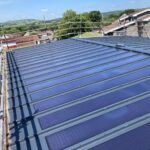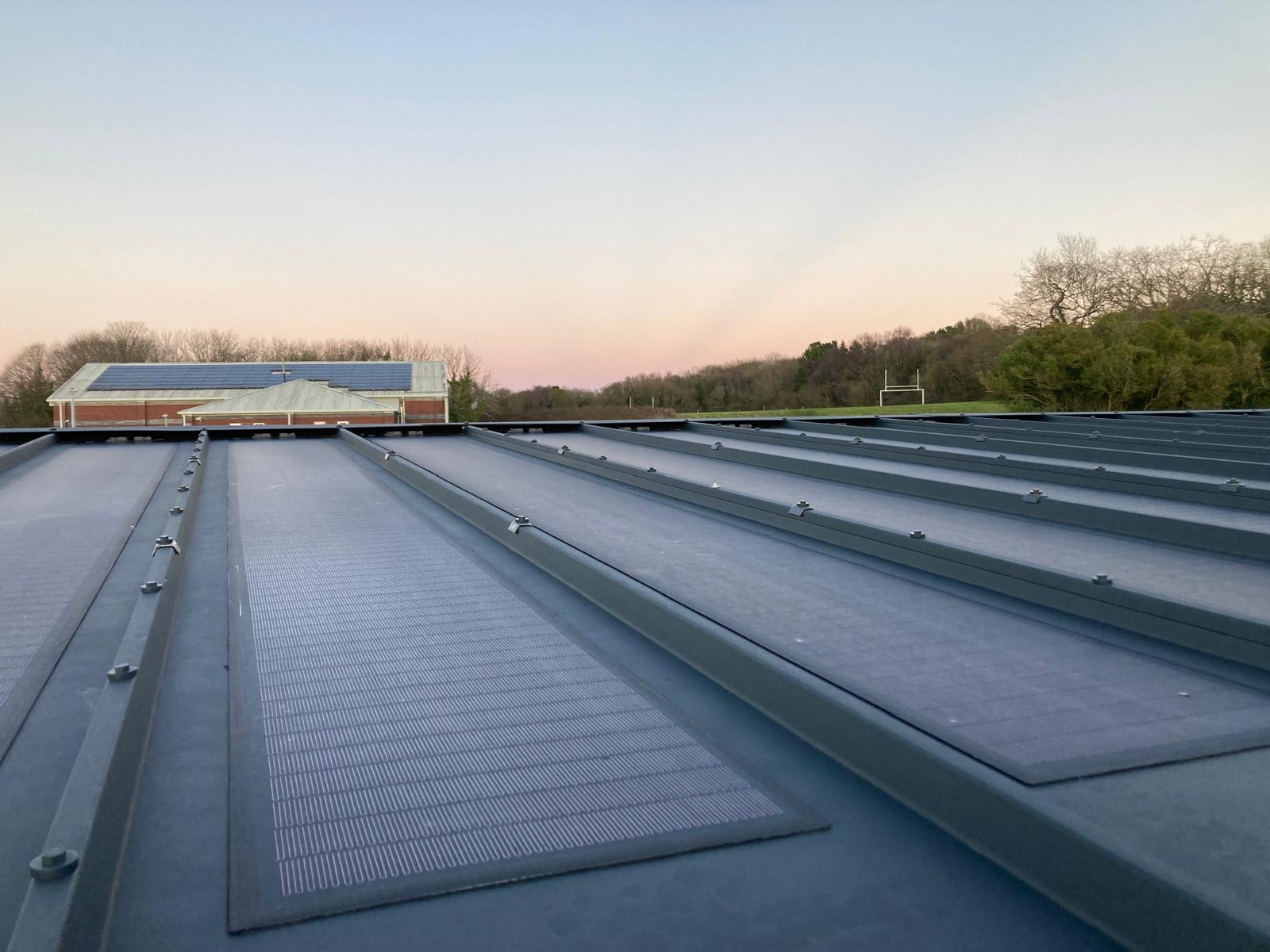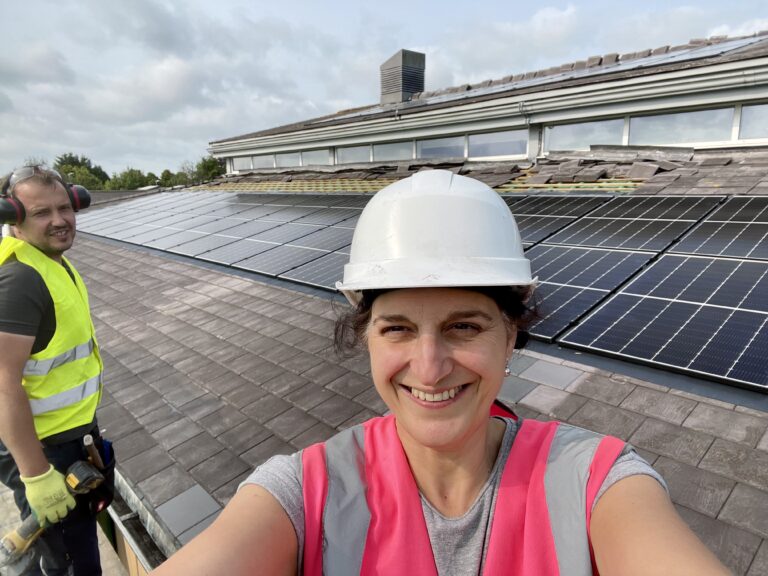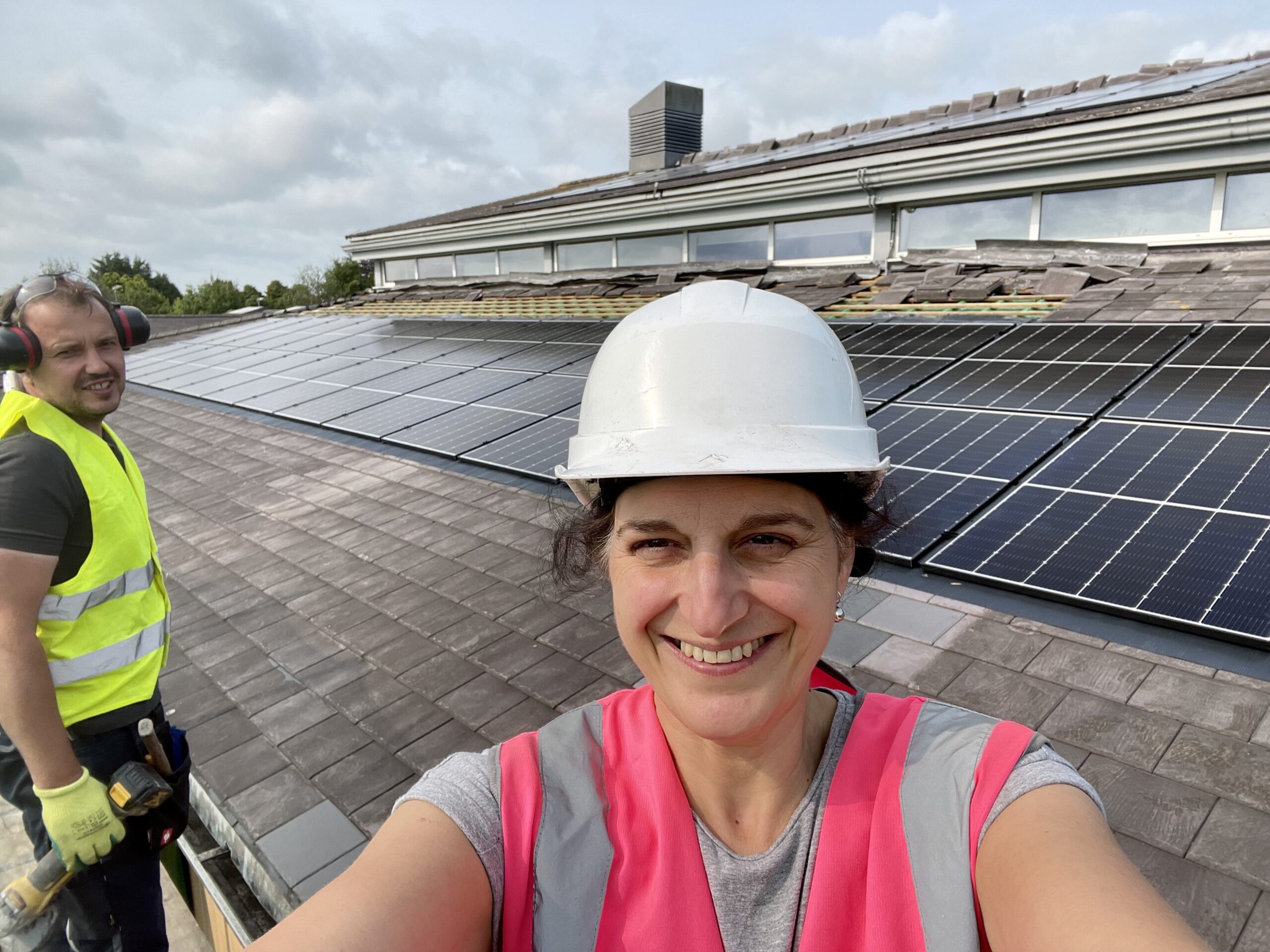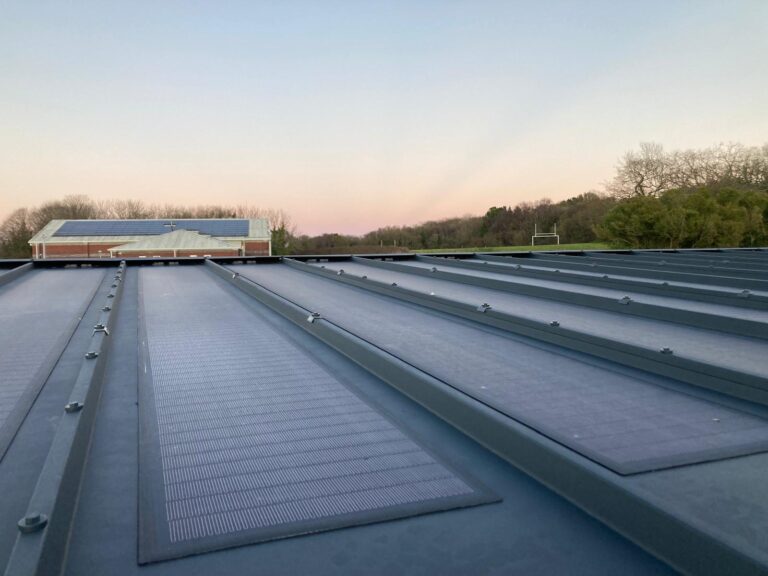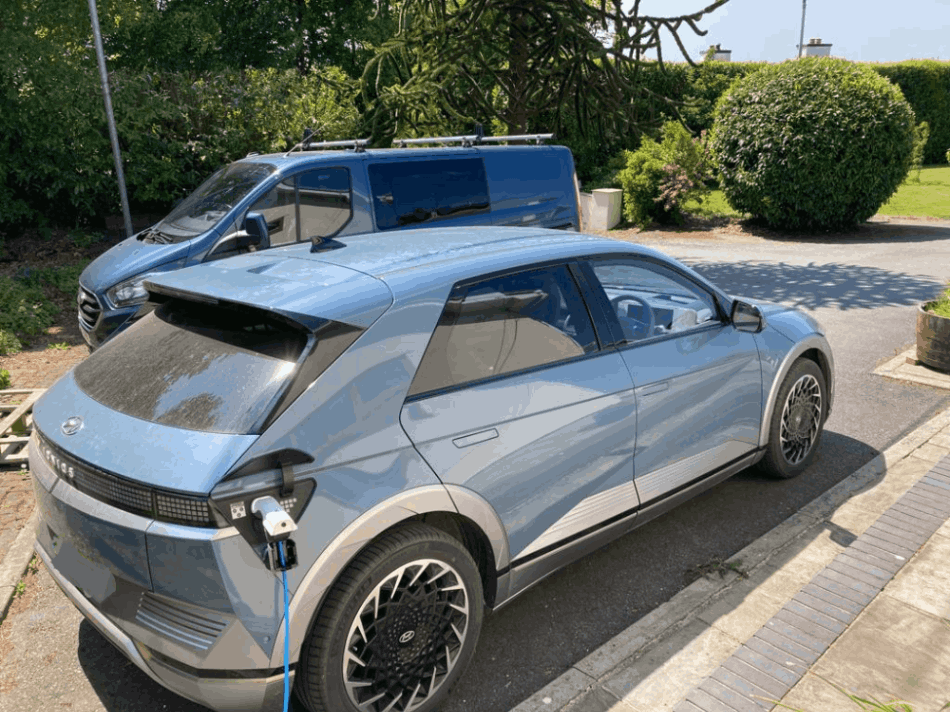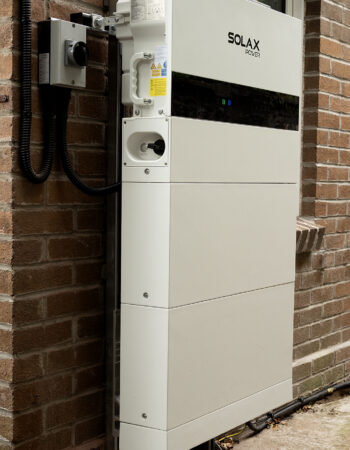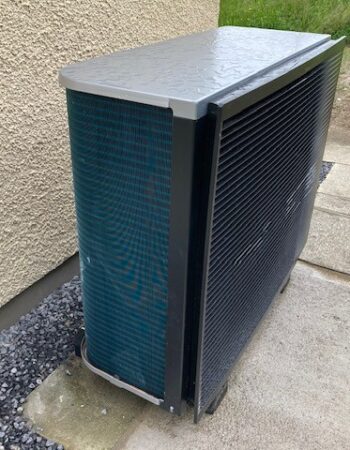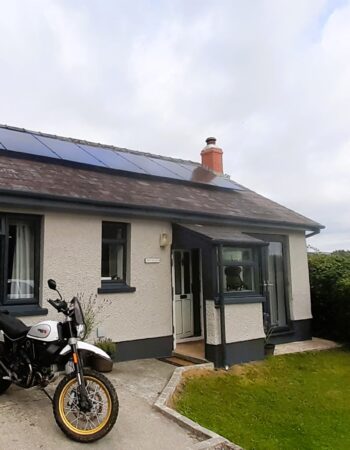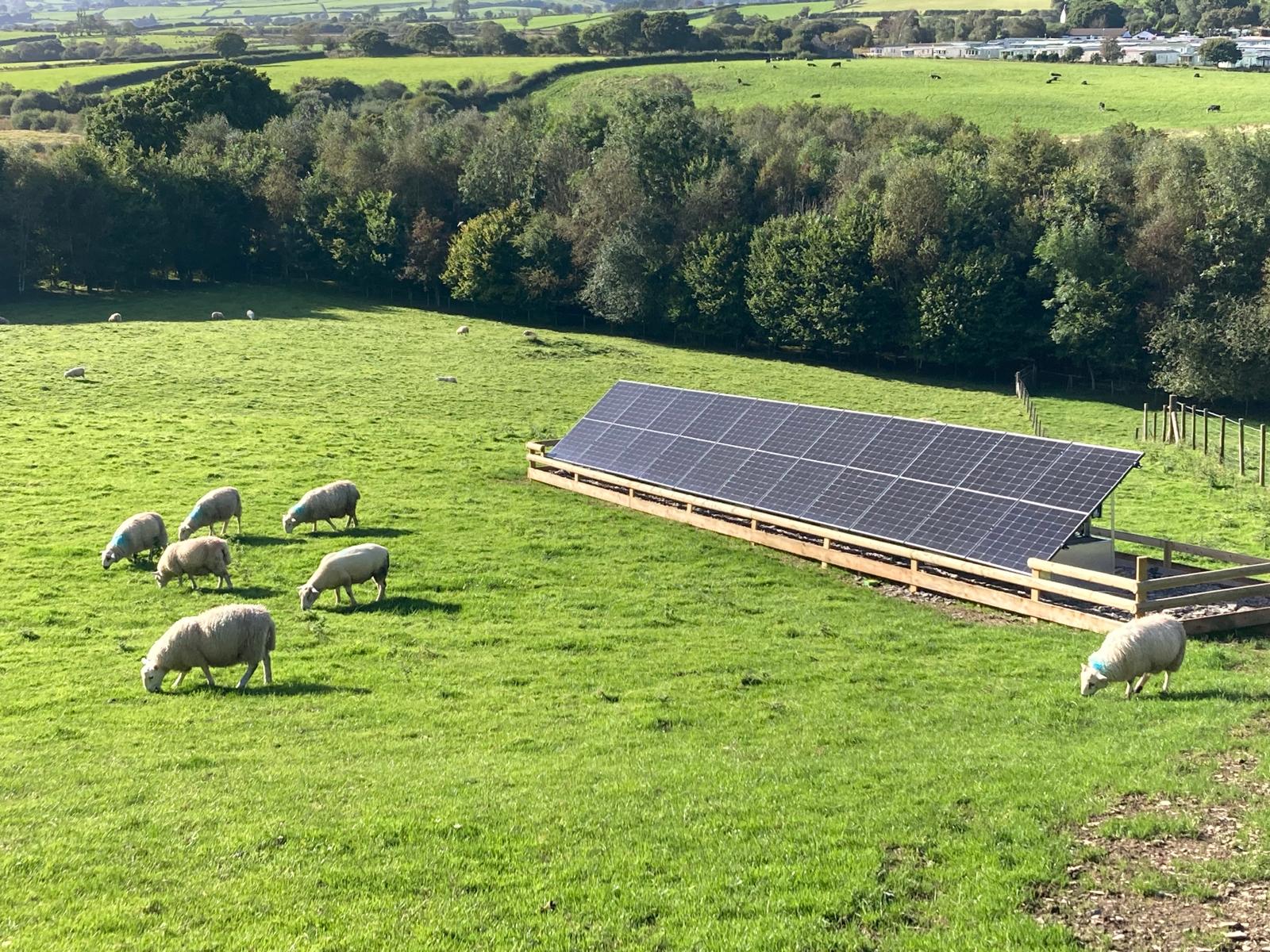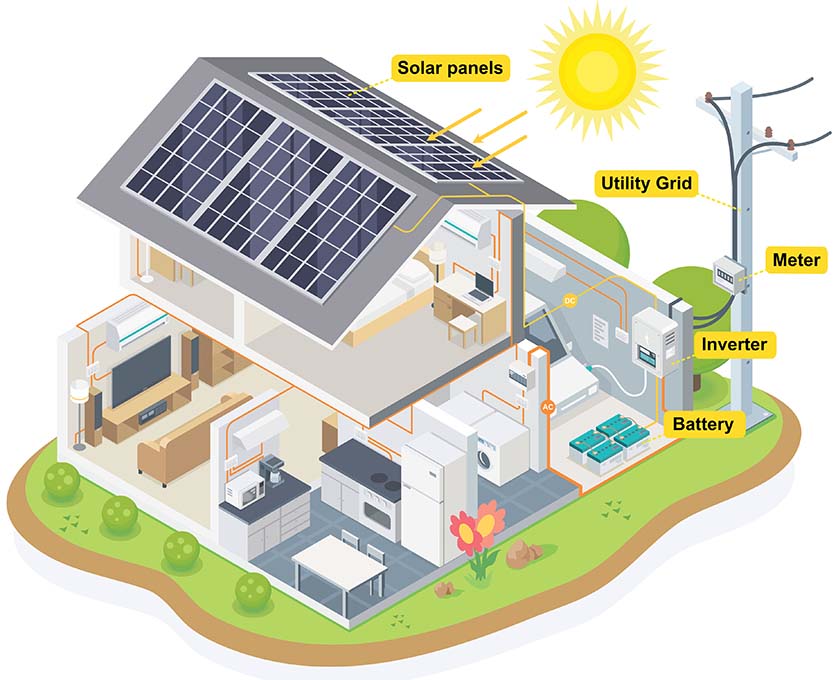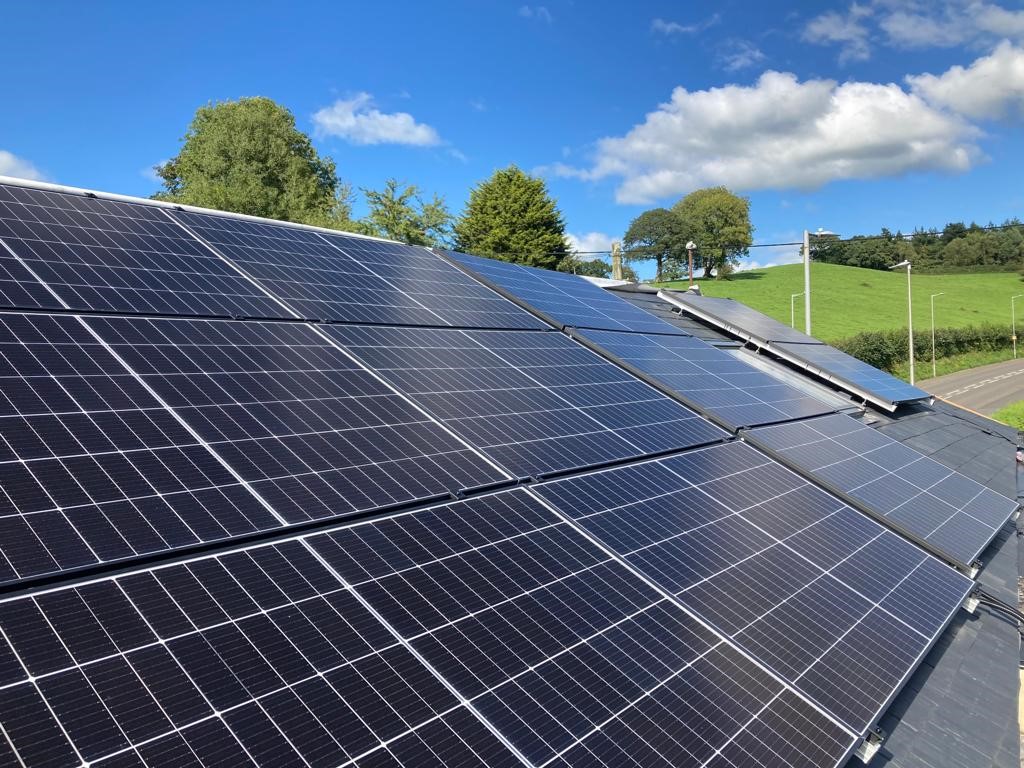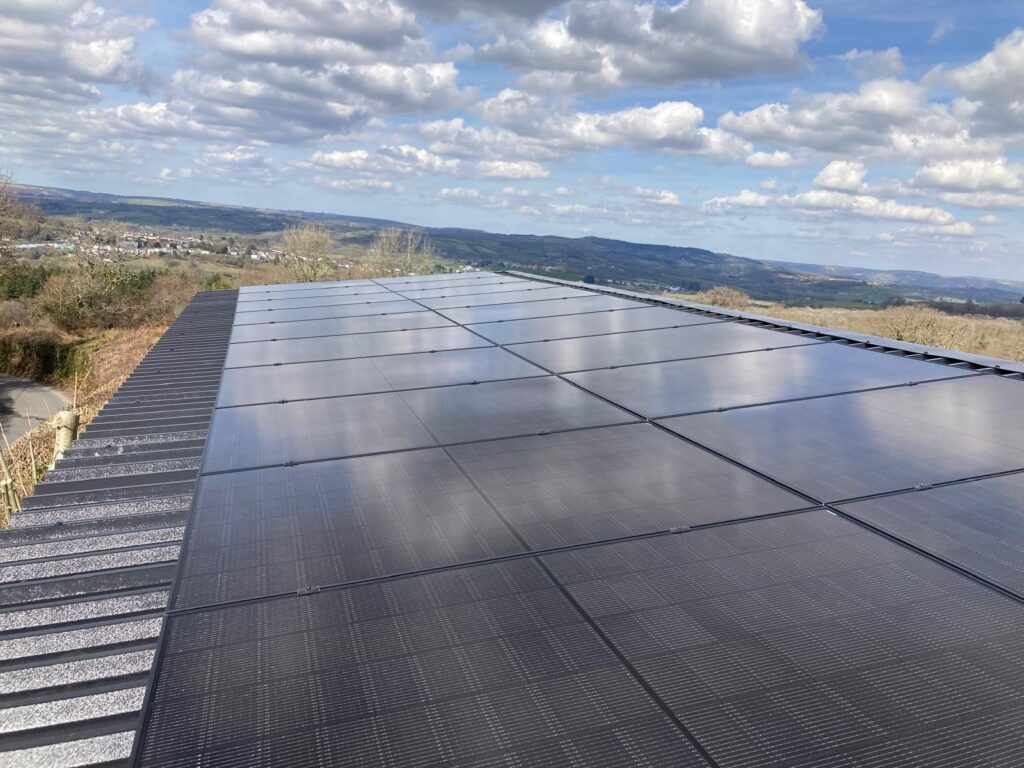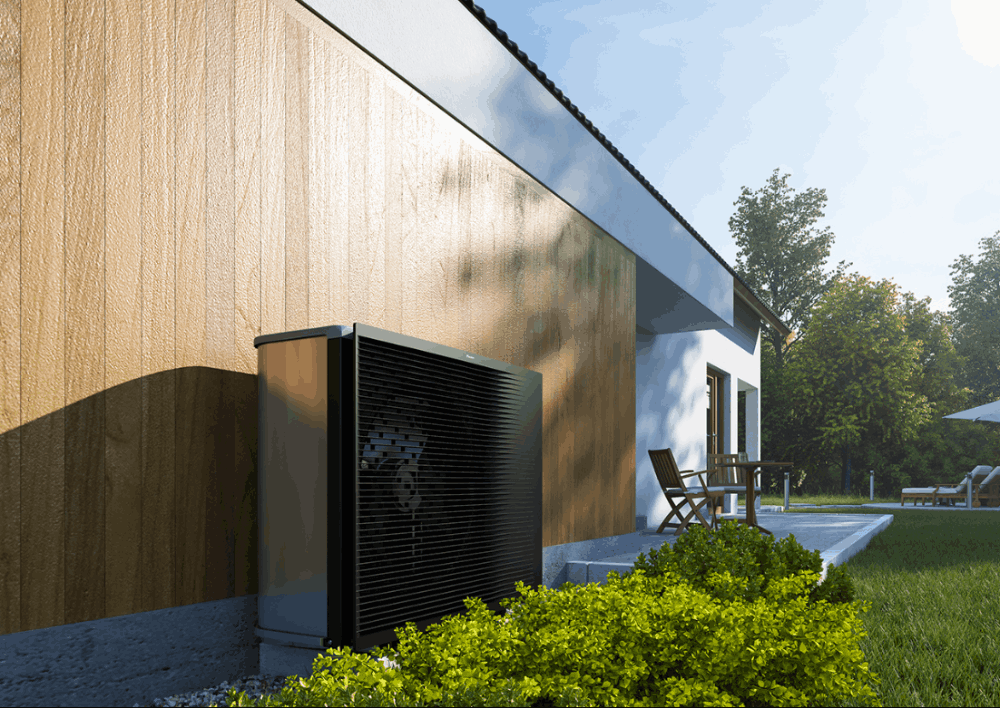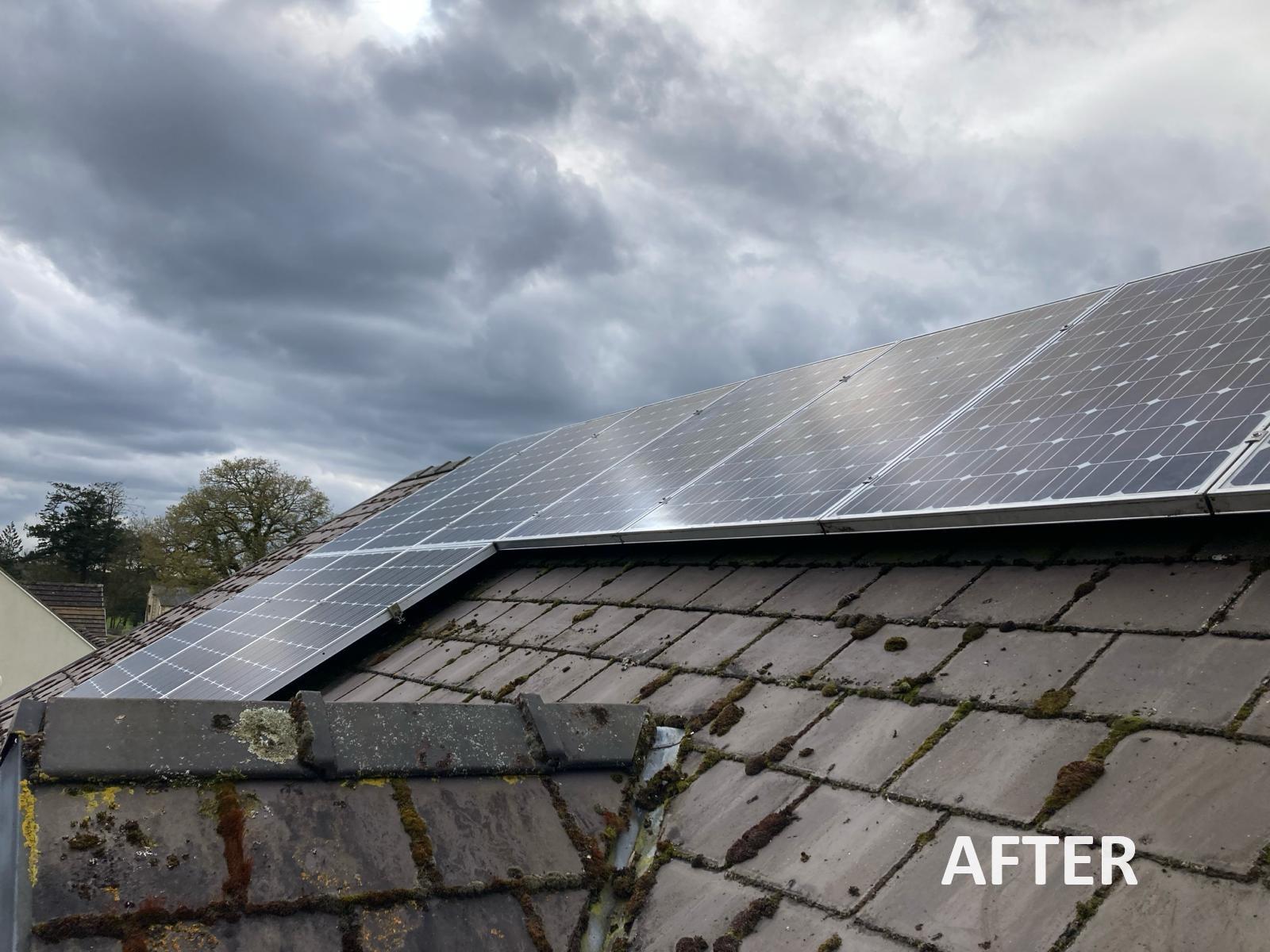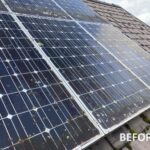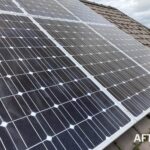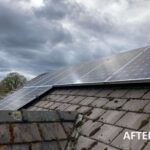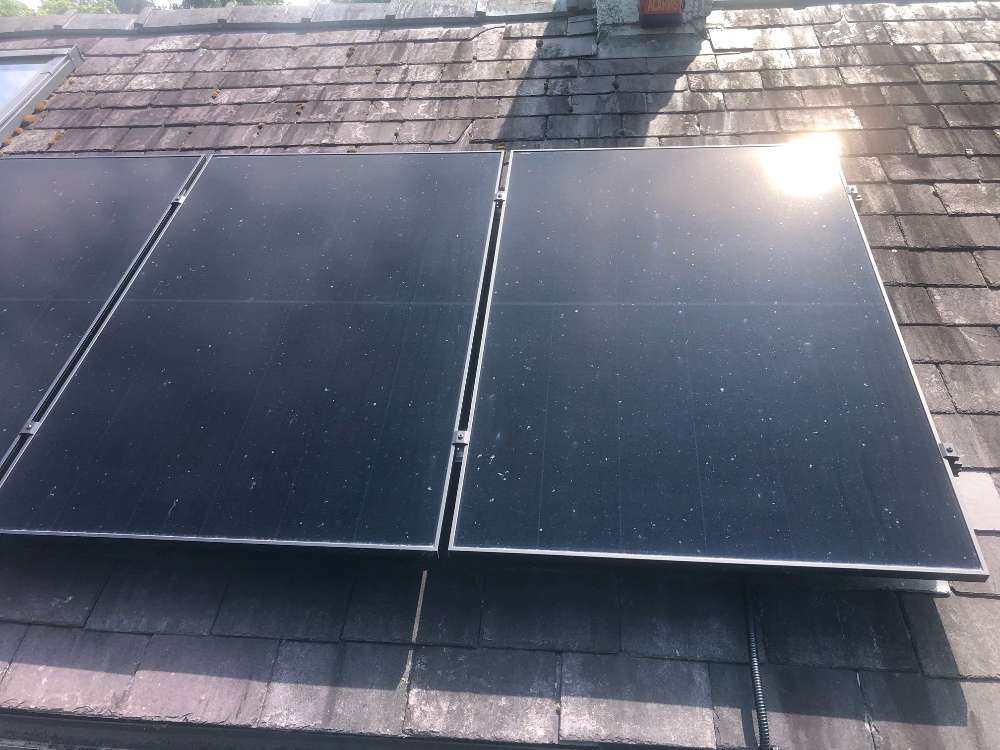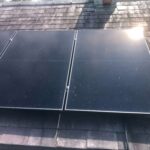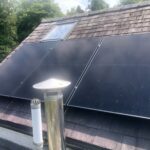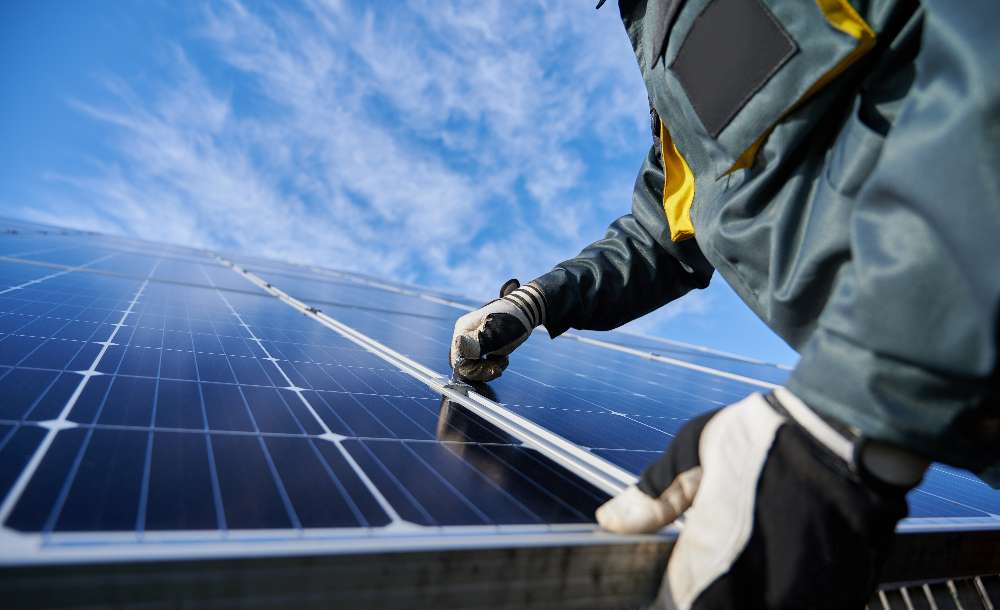Peel-and-Stick Flexible Solar Panels: A Breakthrough for Wales
Peel-and-Stick Flexible Solar PV: A Breakthrough for Wales
Some commercial roofs simply aren’t built for traditional Solar PV. They may have strict weight limits, a delicate membrane, or planning requirements that make standard framed panels too heavy or too intrusive.
That’s exactly what we found in Trimsaran, Carmarthenshire. The client wanted renewable energy, but the roof couldn’t take the load of a conventional installation. Instead of turning the project down, our engineering team explored alternatives — and found the perfect match in a Welsh-made peel-and-stick flexible Solar PV system.
It allowed us to deliver clean energy with no drilling, no added weight, and no compromise on the building’s appearance.
Why Traditional Solar Panels Weren’t an Option
During our initial survey, two challenges became immediately clear:
1. Strict Weight Restrictions
The roof structure could not safely support heavy framed panels or rail systems.
2. A Sensitive, Non-Drillable Roof
The roof membrane needed to remain completely intact, meaning no fixings, no penetrations, and a visually low-profile installation.
These are the kinds of projects where our engineering team thrives — turning “not possible” into “perfectly achievable.”
Our Solution: Peel-and-Stick Flexible Solar PV
To meet the structural and aesthetic requirements, we installed a lightweight, peel-and-stick Solar PV system manufactured in Wales. This technology bonds directly to the roof surface, creating a sleek and durable solar solution without the need for rails, ballast, or drilling.
It’s a smart alternative for buildings that simply cannot host traditional Solar PV — and it’s designed for the UK’s weather conditions.
Benefits of Peel-and-Stick Solar PV
- Extremely lightweight — ideal for roofs with limited load capacity
- No roof penetrations — protects delicate membranes
- Low-profile appearance — blends into the roofline
- Flexible format — suitable for curved or uneven surfaces
- Strong low-light performance — perfect for Welsh weather
- Designed and manufactured in Wales
Why This System Was Ideal for Trimsaran
The building required a solution that was:
- Lightweight
- Completely non-invasive
- Visually discreet
- Reliable in low and diffuse light
Peel-and-stick Solar PV met every requirement — giving the client an elegant, efficient solar installation without affecting the building structure.
Project Spotlight: Commercial Solar PV Installation in Trimsaran
The Challenge
- Roof unable to support conventional panels
- No drilling or mechanical fixings allowed
- A requirement for clean, subtle aesthetics
Our Engineering Approach
- Full structural and Solar PV design carried out in-house
- Installation of peel-and-stick flexible Solar PV technology
- Custom electrical design built by our engineering team
The Result
- A seamless, almost invisible solar installation
- No added structural load
- Strong year-round energy generation
- The roof fully protected and undisturbed
For the client, this meant renewable energy with total peace of mind. For us, it was another example of solving a challenge that standard Solar PV couldn’t meet.
Are Peel-and-Stick Solar Panels Good for Commercial Buildings?
Yes — when used in the right circumstances. Peel-and-stick Solar PV is particularly effective for:
- Roofs with weight restrictions
- Standing-seam or metal roofs
- Curved or irregular roof structures
- Heritage or design-sensitive properties
- Sites where drilling into the roof is not permitted
They’re not a replacement for traditional Solar PV in every scenario, but they excel when a lightweight, non-invasive solution is required.
Flexible Solar PV vs Traditional Solar Panels
| Feature | Peel-and-Stick Flexible Solar PV | Traditional Rigid Solar Panels |
|---|---|---|
| Weight | Very lightweight | Heavy |
| Roof Penetration | None | Requires drilling or ballast |
| Appearance | Low-profile and discreet | Raised and visible |
| Curved Surfaces | Excellent | Poor |
| Suitability for Weak Roofs | Highly suitable | Often unsuitable |
| Low-Light Performance | Very strong | Good |
| Installation Speed | Fast | Moderate |
Our Engineering Team
Every installation is carried out by our in-house MCS-certified engineering team. We never outsource, because projects like this require specialist knowledge, careful planning, and precision.
We specialise in:
- Commercial and agricultural Solar PV systems
- Complex, non-standard, or sensitive roof structures
- Lightweight BIPV and flexible solar technologies
- Projects where aesthetics or planning considerations are key
If a roof is considered “too difficult” by others, we’re usually the team who can make it work.
Frequently Asked Questions
Are peel-and-stick solar panels durable?
Yes — they’re designed for long-term outdoor conditions and include a durable protective surface.
Do they perform well in cloudy weather?
Absolutely. This type of Solar PV responds well to diffuse light, making it ideal for Wales.
Will they damage the roof?
No. They require no fixings and keep the roof membrane intact.
Are they suitable for commercial buildings?
Yes — especially where traditional systems are too heavy or intrusive.
Key Takeaway
Peel-and-stick flexible Solar PV is a game-changing option for commercial buildings that cannot support traditional solar panels. Paired with the expertise of the Solar Save Renewables engineering team, it opens the door for renewable energy on buildings once considered unsuitable.
Thinking About Solar for a Commercial Roof in Wales?
If your building has:
- a weight-limited roof
- a delicate or curved structure
- aesthetic or planning constraints
- concerns about drilling or fixings
…we can help you find the right solution.
Contact Solar Save Renewables — specialists in complex, lightweight, and design-sensitive Solar PV installations across Wales.
